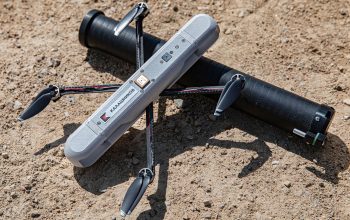Lockheed Martin has reached a groundbreaking milestone in advancing its 5G.MIL® capability, bringing the world one step closer to experiencing seamless connectivity across all domains. In a recent successful lab demonstration, the aerospace giant validated the capabilities of its cutting-edge space payload, affirming its potential to deliver advanced global communications from orbit. During the October demonstration, Lockheed Martin unveiled the industry’s inaugural fully regenerative Advanced 5G Non-Terrestrial Network (NTN) Satellite Base Station. This innovative space component, integral to the company’s 5G.MIL Unified Network Solutions Program, showcased its prowess in providing global communication capabilities. The live hardware-in-the-loop lab environment witnessed the Advanced 5G NTN Satellite Base Station executing high-speed data transfers, linking up with prototype NTN user equipment compliant with the 3GPP Release 17 standard. This industry standard ensures enhanced radio flexibility and minimal latency, crucial for efficient communication.
“Space layer capabilities are essential for consistent, secure connectivity and global coverage for 5G communications systems. 5G from space will enable Joint All-Domain Command and Control operations especially in austere environments, remote locations and contested areas. Our Satellite Base Station is real, operational hardware and we’re excited for the next step — integrating this powerful payload into our self-funded Tactical Satellite which we’ll launch next year,” said Joe Rickers, Lockheed Martin’s vice president for Connectivity, Transport and Access.
One of the defining aspects of Lockheed Martin’s Advanced Satellite Base Station for 5G, technically known as gNodeB, is its comprehensive setup. It comprises a full 5G New Radio (NR) Radio Access Network (RAN) stack, RAN Intelligent Controller (RIC), and 5G Stand Alone (SA) Core running on space-qualified flight hardware set to fly on the TacSat. The system is reprogrammable on orbit using Lockheed Martin’s SmartSat™ software-defined satellite architecture. This breakthrough technology allows for a split architecture, distributing the Control Unit (CU) on the ground and the Distributed Unit (DU) on the satellite. This flexibility enhances implementation options and opens doors to diverse network structures. The successful connection between the Satellite Base Station and the user equipment on the ground, facilitated by a space communications channel emulator, showcased capabilities akin to a satellite Low Earth Orbit, introducing doppler and delay parameters.
Lockheed Martin’s collaborative efforts with key subcontractors have been instrumental in reaching this pinnacle. Partnerships with AccelerComm™, Radisys, and Keysight have led to significant strides in developing and integrating the regenerative 5G NTN HBS-Space system over the past three years. The culmination of these endeavors has placed the Advanced 5G Satellite Base Station at the core of Lockheed Martin’s mission to provide global 5G connectivity. The company’s extensive investment and innovation in Hybrid Base Stations, including fixed, relocatable, mobile, and now space variants, underscores their commitment to revolutionizing connectivity across the globe. As the world eagerly awaits the 2024 launch of this payload, Lockheed Martin stands poised to usher in a new era of intercontinental communication through space-based 5G technology.















